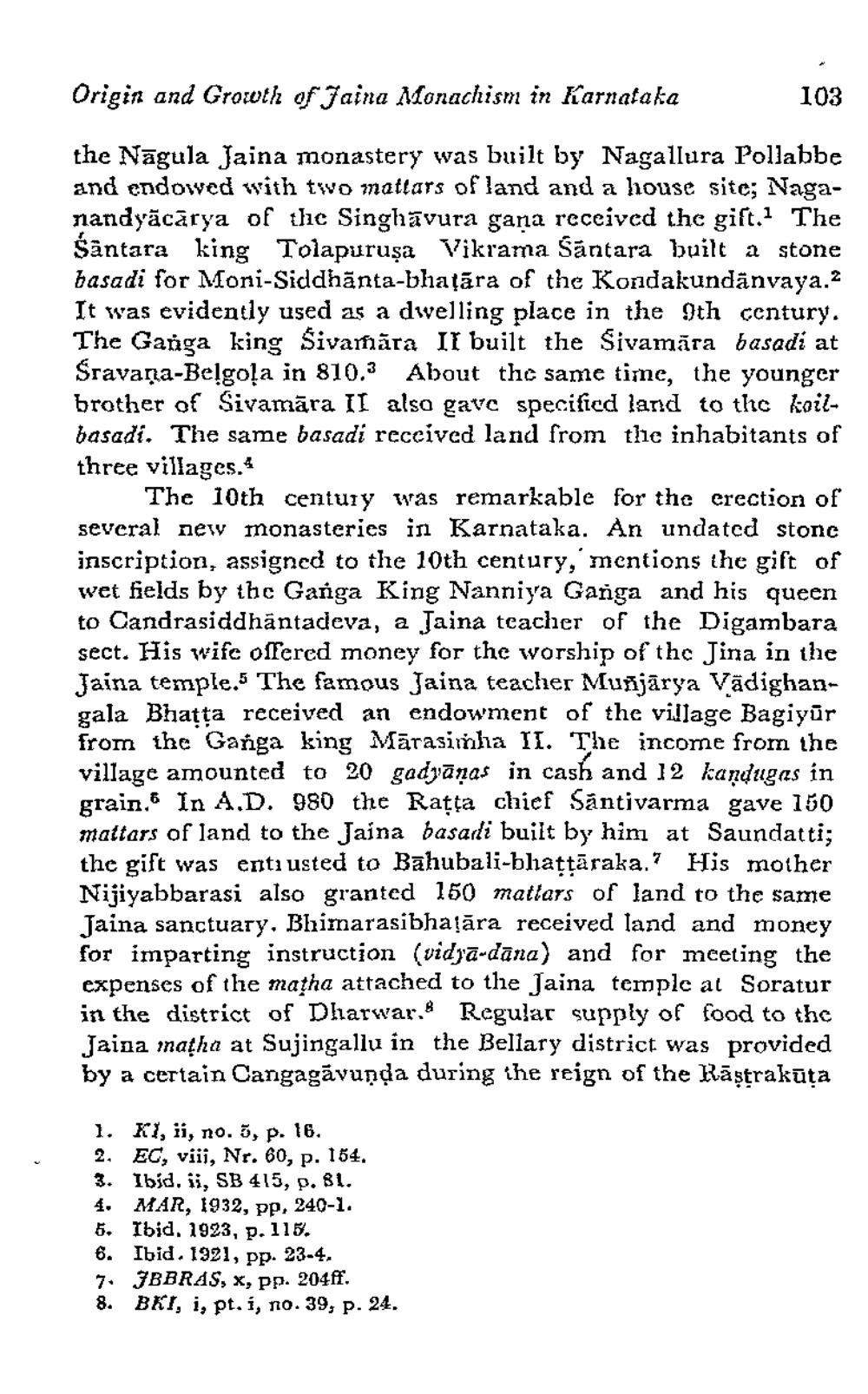________________
Origin and Growth of Jaina Monachism in Karnataka
103
the Nāgula Jaina monastery was built by Nagallura Pollabbe and endowed with two mallars of land and a house site; Naganandyācārya of thic Singhāvura gana received the gift. The Santara king Tolapuruşa Vikrama Sántara built a stone basadi for Moni-Siddhānta-bhațāra of the Kondakundânvaya.2 It was evidently used as a dwelling place in the 9th century. The Ganga king Sivamāra II built the Sivamāra basadi at Sravana-Belgoļa in 810.3 About the same time, the younger brother of Sivamāra II also gave specificd land to the koilbasadi. The same basadi received land from the inhabitants of three villages.'
The 10th century was remarkable for the erection of several new monasteries in Karnataka. An undated stone inscription, assigned to the 10th century,'mentions the gift of wet fields by the Ganga King Nanniya Ganga and his queen to Candrasiddhāntadeva, a Jaina teacher of the Digambara sect. His wife offered money for the worship of the Jina in the Jaina temple. The famous Jaina teacher Munjārya Vādighangala Bhatta received an endowment of the village Bagiyūr from the Ganga king Mārasimha II. The income from the village amounted to 20 gadyānas in cash and 12 kandugas in grain.6 In A.D. 980 the Ratga chief Santivarma gave 150 mattars of land to the Jaina basardi built by him at Saundatti; the gift was enti usted to Bahubali-bhattāraka.? His mother Nijiyabbarasi also granted 150 mattars of land to the same Jaina sanctuary. Bhimarasibhaļāra received land and money for imparting instruction (vidya-dana) and for meeting the expenses of the matha attached to the Jaina temple at Soratur in the district of Dharwar & Regular supply of food to the Jaina matha at Sujingallu in the Bellary district was provided by a certain Cangagāvunda during the reign of the Rāştrakūța
1. K), ii, no. 5, p. 16. 2. EG, viii, Nr. 60, p. 154. 3. Ibid, ii, SB 415, p. 81. 4. MAR, 1932, pp, 240-1. 5. Ibid. 1923, p. 115. 6. Ibid. 1921, pp. 23-4. 7. JBBRAS, X, pp. 204ff. 8. BKI, i, pt.1, no. 39, p. 24.




